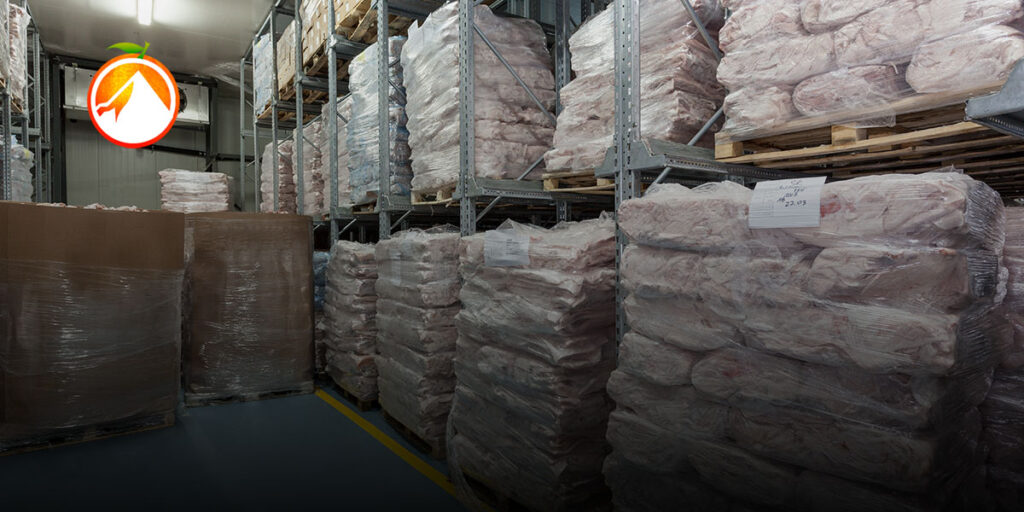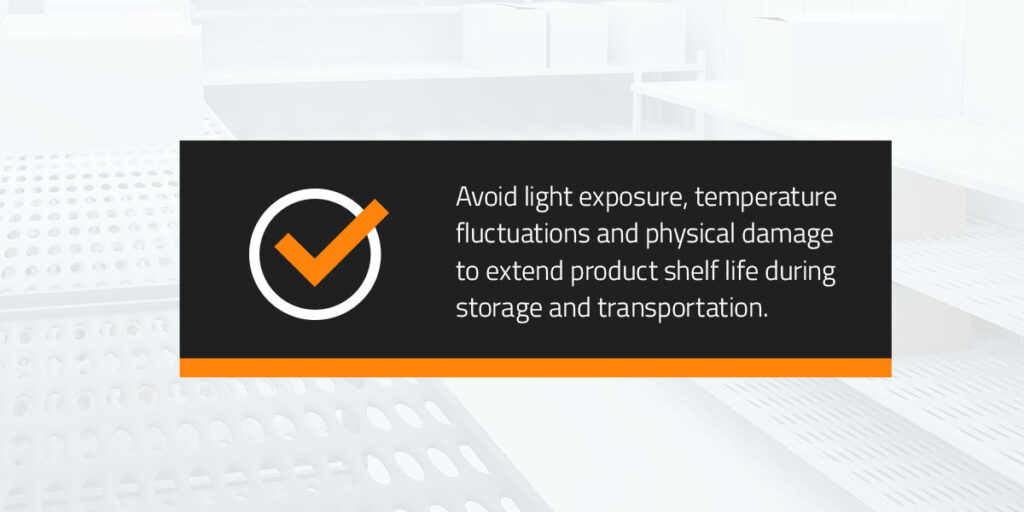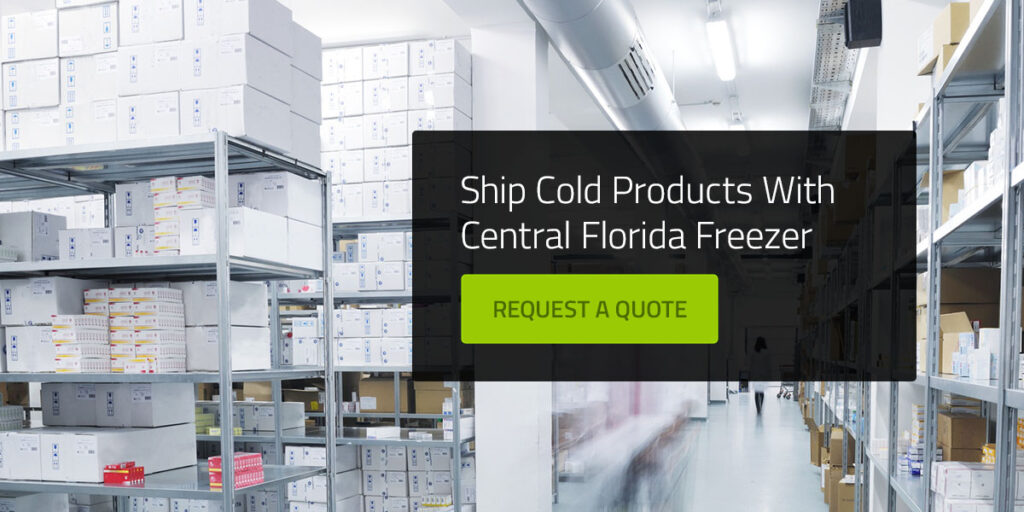Maximizing Shelf Life — Packaging for Cold Storage

Extending the shelf life of goods in the food, medical and pharmaceutical industries is critical. The quality of medical and food-grade products can degrade during exposure to increasing temperatures, which triggers chemical reactions. Cold storage packaging can minimize waste, reduce loss and ensure products meet temperature-sensitive regulatory requirements.
Empower yourself with knowledge of packaging materials, advanced technologies and compliance. This understanding lets you box your inventory into efficient, temperature-controlled packaging and partner with a reliable cold storage facility. The result will ensure your inventory reaches consumers in optimal condition.
Understanding Cold Shipping Packaging
Cold storage packaging involves specialized materials and packing techniques to preserve perishable goods’ integrity and quality during storage and transportation. Packaging works with cold-chain shipping containers or storage to maintain specific temperature ranges, control humidity levels and shield products from contaminants, moisture and physical damage.
Cold shipping packages use insulated materials like foam, paperboard or specialized films to maintain a consistent low temperature and prevent heat transfer from the external environment.
Some cold storage packaging may also incorporate cooling elements like ice packs or phase-change materials to actively regulate and sustain low temperatures during transit or storage. These cooling elements extend perishable goods’ shelf life.
Types of Packaging for Optimal Cold Storage
Packaging materials for cold storage facilitate safe transport, especially for pharmaceutical products. Other solutions include thermal blankets, insulated containers, gel bricks, dry ice, phase-change material and expanded polystyrene or Styrofoam, known as EPS panels. You can categorize cold-chain packaging into three types.
- Active packaging: Active cold-chain packaging does not use phase-change materials like water or dry ice. Instead, it uses mechanical or electric systems to maintain the correct temperature.
- Passive packaging: Passive packaging relies on phase-change materials to keep temperatures low. This affordable solution can be reliable with the appropriate packing procedures.
- Hybrid packaging: Using a combination of PCM and thermostatic control, hybrid packaging has moderate temperature accuracy and reliability.
Advanced Cold Storage Packaging Technologies
These advanced solutions optimize cold storage products’ shelf life.
- Vacuum insulation panels: VIPs use a vacuum-sealed core to reduce heat transfer and create excellent insulation capabilities. The insulation layers on these panels are thinner, reducing packaging size and weight.
- Phase-change materials: PCMs can absorb and release thermal energy during a phase transition to offer a stable internal temperature.
- Eutectic plates: Chilling these plates before packing keeps temperatures consistent during transit. They are reusable and rechargeable.
- Aerogels: This material has high-insulating, low-density properties thanks to interconnected nanoparticles. They protect products against heat transfer, lowering temperature fluctuations to create optimal temperature control in transit.
- Monitoring technology: Place these wireless temperature sensors inside the package. They send real-time alerts if temperatures suddenly change, prompting quick action.
- Internet of Things: IoT-enabled solutions allow cold chain monitoring and analysis. Stakeholders can make proactive by using data-driven decisions in cold storage packaging.
Optimizing Shelf Life

Avoid light exposure, temperature fluctuations and physical damage to extend product shelf life during storage and transportation. Advanced cooling technologies provide the following outcomes from packaging for cold storage.
- Humidity management: Controlling humidity levels reduces moisture buildup and the risk of microbial growth, preserving product quality.
- Temperature control: Precise temperature control throughout storage and transportation prevents spoilage.
Compliance and Safety Standards
Whether you are shipping cold products locally or internationally, you must follow the rules set for temperature-controlled storage and transportation. Packaging is only one part of cold chain management. Adherence to strict safety regulations ensures product integrity throughout storage and transportation. Packaging materials must comply with the food safety standards set by government agencies like the Food and Drug Administration or the European Food Safety Authority. The following bodies govern cold chain compliance and regulations.
- ISO 9001: An ISO 9001 certification is a globally recognized quality management standard.
- The Food Safety Modernization Act: The FMSA of 2011 is the primary regulatory source of rules for cold chain logistics.
- Hazard Analysis and Critical Control Point: The HACCP is an internationally recognized technique that helps guarantee food safety.
- Good distribution practice: The GDP sets minimum standards wholesale distributors must meet to maintain medicines’ integrity and quality.
Labeling and Traceability
Packaging must comply with labeling requirements. Labels provide consumers and distributors with essential information about product contents, expiration dates and storage instructions. Additionally, smart traceability systems simplify tracking and package identification throughout the supply chain, helping in quality control or product recalls.
Labeling Requirements for Cold Storage Products
As these products will likely remain in cold storage throughout their life span, labeling materials must withstand these temperatures. These labels should adhere quickly, stay in place and have visual appeal.
Consider these elements for your product’s labeling.
- Product name: Your product’s name or description should be visible and legible on the packaging.
- Ingredients list: Add a list of ingredients, including additives or allergens, to comply with food and pharmaceutical labeling regulations.
- Nutritional information: Food products should offer nutritional facts, serving sizes, calories, micronutrients and other relevant information.
- Storage instructions: Provide concise storing instructions, including the recommended temperature ranges and other conditions that facilitate product quality and safety.
- Lot or batch number: This number is a unique identifier that enables product traceability in case of quality or safety concerns.
- Manufacturer information: Add contact information for the manufacturer, distributor or party responsible for the product.
- Certification seals: Finally, add certification seals or logos demonstrating industry standard compliance.

Ship Cold Products With Central Florida Freezer
Investing in advanced storage benefits product quality and profitability. Technologies like active packaging and nanotechnology can create the optimal conditions to extend product shelf life and reduce waste. Finally, you must partner with a reliable cold storage facility to preserve your temperature-sensitive products.
Central Florida Freezer provides cold storage solutions that include end-to-end shipping at competitive prices. Our highly trained staff keeps your products under total environmental control. Learn how we can help you maintain your cold storage product integrity with a customized quote or call us at 352-365-6969.

No comments yet.